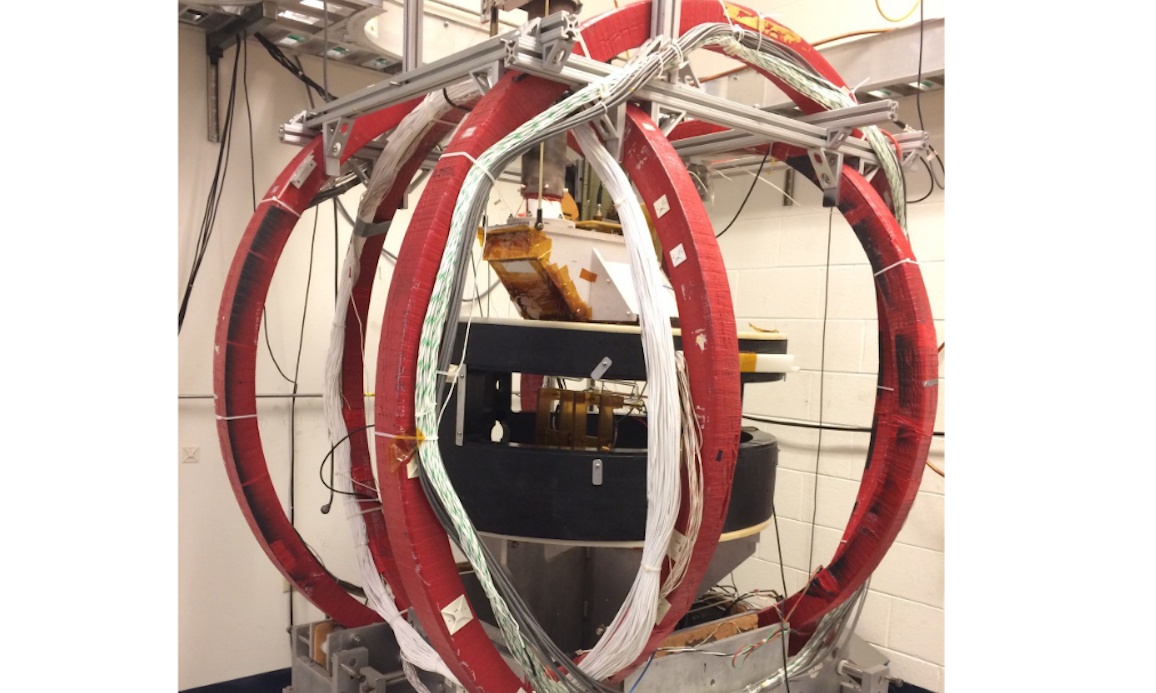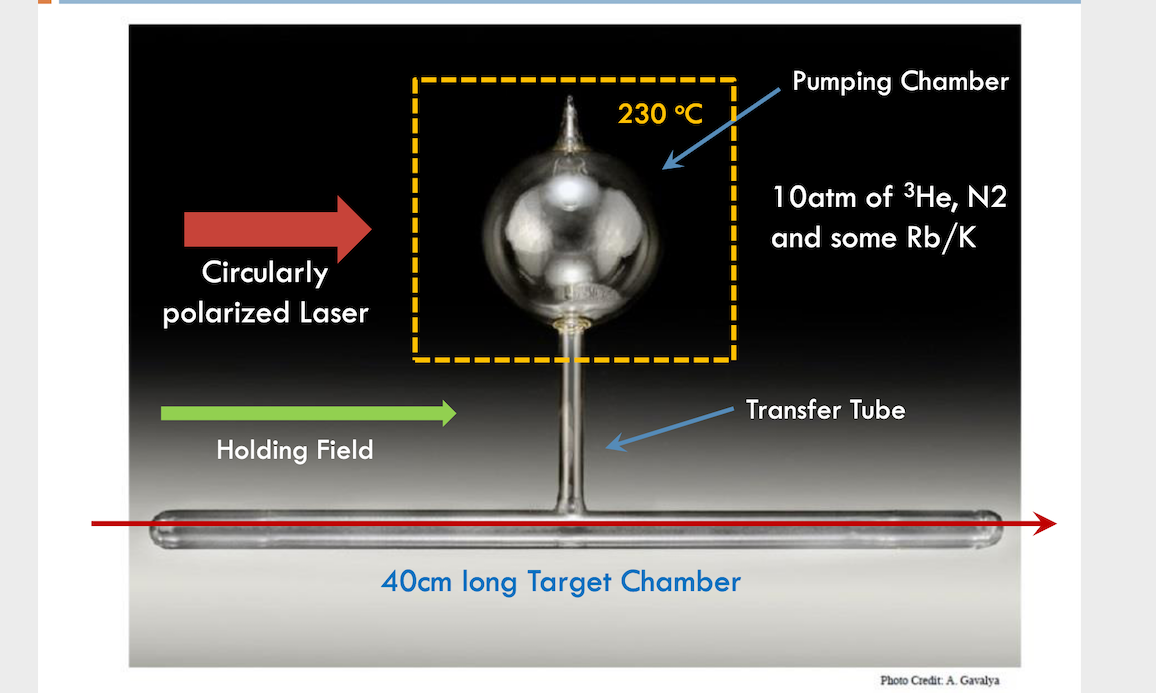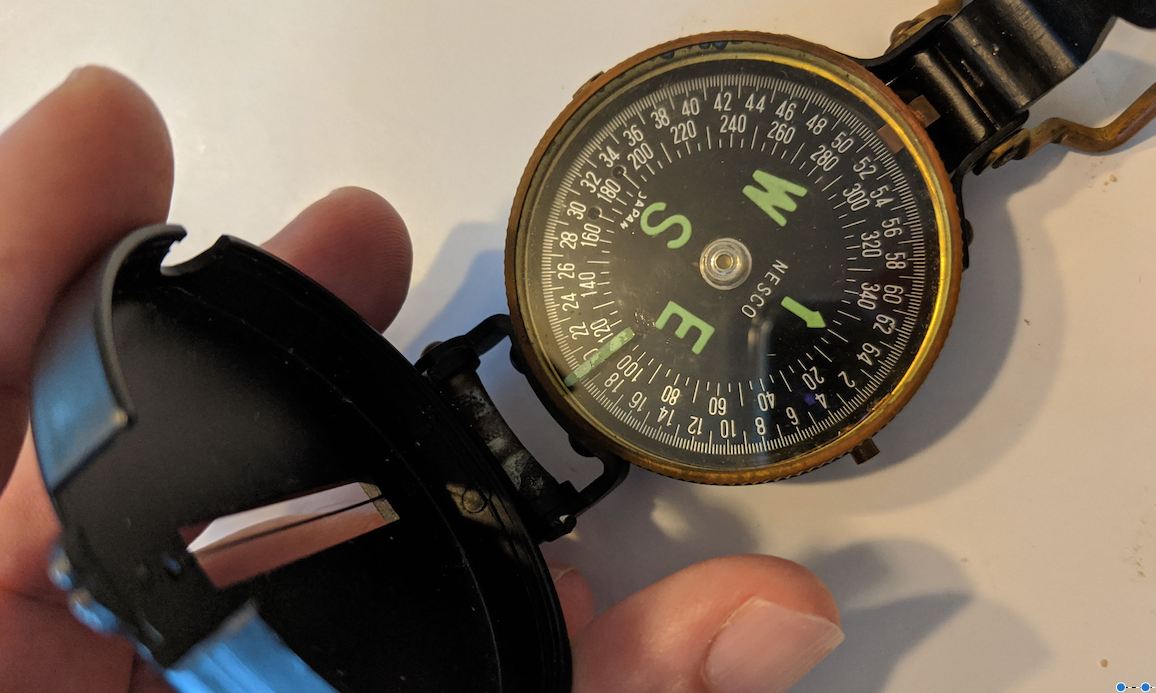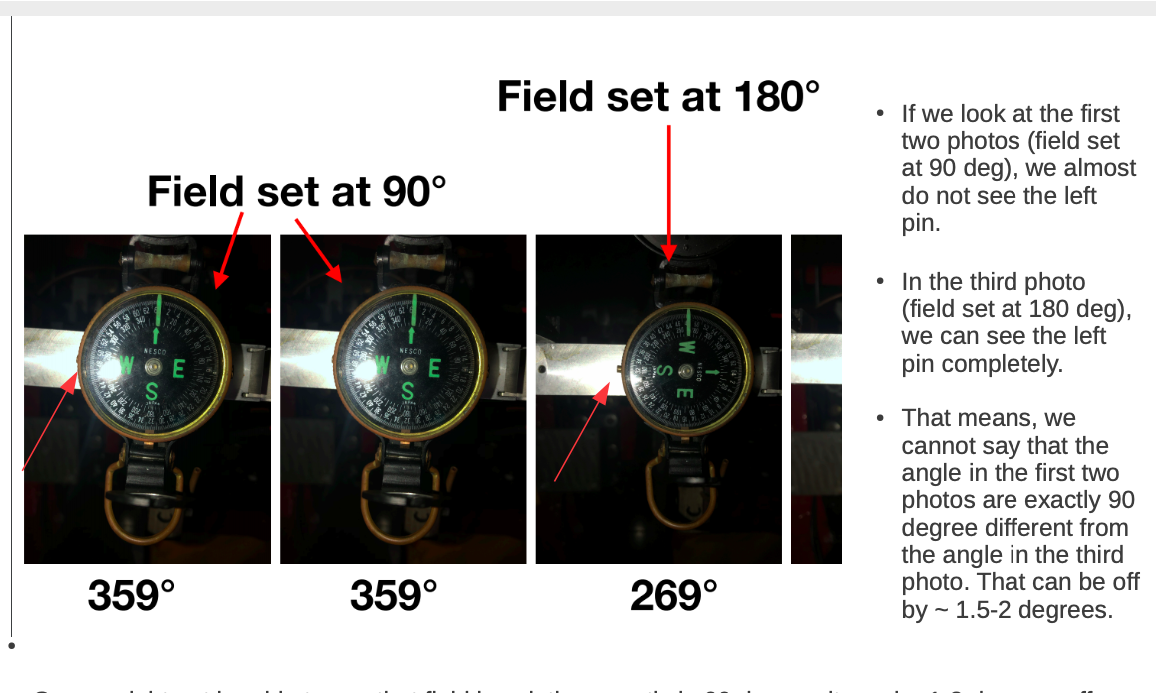Photos of the helium-3 target unit, a diagram of the helium-3 target cell, the compass, and a brief analysis of compass measurements with photos.
Physicists use an old compass to troubleshoot an experiment
NEWPORT NEWS, VA – An old compass once helped a young scout to “Be Prepared” for whatever lay in front of him. Now, that same compass has helped a physics experiment during its run at the U.S. Department of Energy’s DOE’s Thomas Jefferson National Accelerator Facility during a time crunch.
The compass in question belongs to Douglas Higinbotham, head of the Electron-Ion Collider (EIC) Group at Jefferson Lab and a former Hall A/C staff scientist. He says the compass has had a long and useful life.
Purchased from a local hardware store in the late 1970s, it guided Higinbotham through Cub Scout outings on Virginia’s Eastern Shore, where he grew up. Over forty years later, the same compass accompanies Higinbotham’s son to Boy Scout campouts.
But the life of the old compass really took an interesting turn this past spring. While an experiment in Jefferson Lab’s Hall C was beginning its run, preliminary data from the experiment suggested that something was off. The scientists who work on it thought maybe the problem was the experiment’s magnetic fields: perhaps they weren’t pointing in the direction they should have been.
But the experiment was already underway, and the clock had already started on its allotted runtime in Jefferson Lab’s Continuous Electron Beam Accelerator Facility (CEBAF), a DOE User Facility. Each experiment is granted only a finite amount of runtime, and once the clock starts, it continues to tick along, whether the experiment is actually running or not.
That meant the scientists didn’t have time to measure the magnetic fields with their typical time-intensive methods that involve fancy equipment and lots of people.
“They’re running the beam, and that’s all the time you’re going to get,” Higinbotham said. “So, when you’re down in the hall trying to figure out a problem, your clock is still ticking.”
They needed something faster and simpler than they’d ever used before.
As Higinbotham’s colleagues proposed complicated ways to map the magnetic fields during a conference call, he suddenly remembered his old compass, which his son had been using recently. He pulled it out, wondering if it might be precise enough for the job. Everyone agreed to give it a go.
Magnetic Fields Help CEBAF Target Neutrons
Physicists use a helium-3 target to learn more about the properties and structure of neutrons, which are particles that live in atomic nuclei. They do that by shooting CEBAF’s electron beam at polarized neutrons inside the target. Polarized neutrons are neutrons whose spins are oriented in the same direction.
Polarized neutrons aren’t easy to come by. However, helium-3, a form of helium that’s quite rare on Earth but abundant on the moon’s surface, offers scientists a good source of polarized neutrons. Its nuclei house one neutron and two protons.
“Helium-3 has been one of the go-to targets at Jefferson lab for decades now,” Higinbotham said.
The glass helium-3 target is a horizontal tube with a bulb rising from its middle. A laser hits the helium-3 inside the bulb, polarizing its neutrons. These polarized neutrons then flow down to the horizontal tube, where they can get blasted with electrons in CEBAF’s electron beam as it shoots through the tube.
The collision of electrons and polarized neutrons produces data that reveals more about neutrons. As the electron beam strikes individual neutrons during the experiment, depolarizing them, they flow back up to get re-polarized by the laser.
But the scientists don’t only want the neutrons’ spins to be aligned, or polarized, they also want the spins to point in a particular direction. That’s why the helium-3 target has magnetic fields.
Around the glass target holding the helium-3 are big red circular magnets that create a magnetic field pointing in whichever direction they’d like. The magnetic field aligns the neutrons’ spins in a specific direction. It also helps the laser polarize the neutron.
When the experiment was running, less of the neutrons were polarized than they expected, which led the helium-3 target team to believe the field direction might be as much as 4 degrees off from where they wanted. They had to make sure the field was pointing in the right direction.
“We have all kinds of great ways to do really high-precision measurements of the helium-3 target’s magnetic fields,” Higinbotham said. “But they require space and time.”
Enter the multi-generational compass.
Compass Targets Magnetic Fields
William “Bill” Henry, a Jefferson Lab postdoctoral scientist who also works on the helium-3 target, was the one who actually measured the magnetic fields with Higinbotham’s compass.
To do so, he taped the compass to a bar of the target and took a picture with his phone. He repeated that for all four field directions the experiment uses, and consulted the glow-in-the-dark green lines and letters on the compass in the pictures to read the field direction.
There was one hiccup. Henry noticed that two pictures of one field direction were different by 2 degrees. He quickly figured out that this was due to the position of his phone’s camera relative to the compass. Moving the camera to the left or right makes the compass appear to read a different degree. Henry adjusted for that effect by looking at how much of the little button on the left side of the compass was sticking out in the pictures.
Ultimately, the compass allowed them to measure the field within a degree, as needed. They found the fields for all four settings were pointing in the correct directions, meaning the field wasn’t the problem.
“We’re still not quite sure what it was,” Henry said. “But that’s something to figure out in the coming weeks.”
Higinbotham said he might buy a new compass to keep around for future “quick and dirty” field measurements.
The helium-3 target is not currently using the beam anymore, so the team is now measuring the magnetic field with a fancier and more traditional method—it involves a laser reflecting off a mirror floating on gas. While that method is also known as a compass, the whole process takes about a week and requires a lot more peoplepower.
“And we’re pretty much just checking the same thing that we got in an hour with this compass,” Bill said. “Obviously, we wouldn’t have time to do something like that in the middle of an experiment, so having something like this was really helpful.”
Of the many scientists involved in the helium-3 target, Higinbotham wants to credit the work of the other postdoctoral scientist, Arun Tadepalli, and the doctoral students, Junhao Chen, Mingyu Chen, Melanie Rehfuss, and Murchhana Roy, who he said make this experiment possible.
Further Reading
Experiment Proposals
E12-06-110
E12-06-121
By Chris Patrick
Contact: Kandice Carter, Jefferson Lab Communications Office, kcarter@jlab.org





